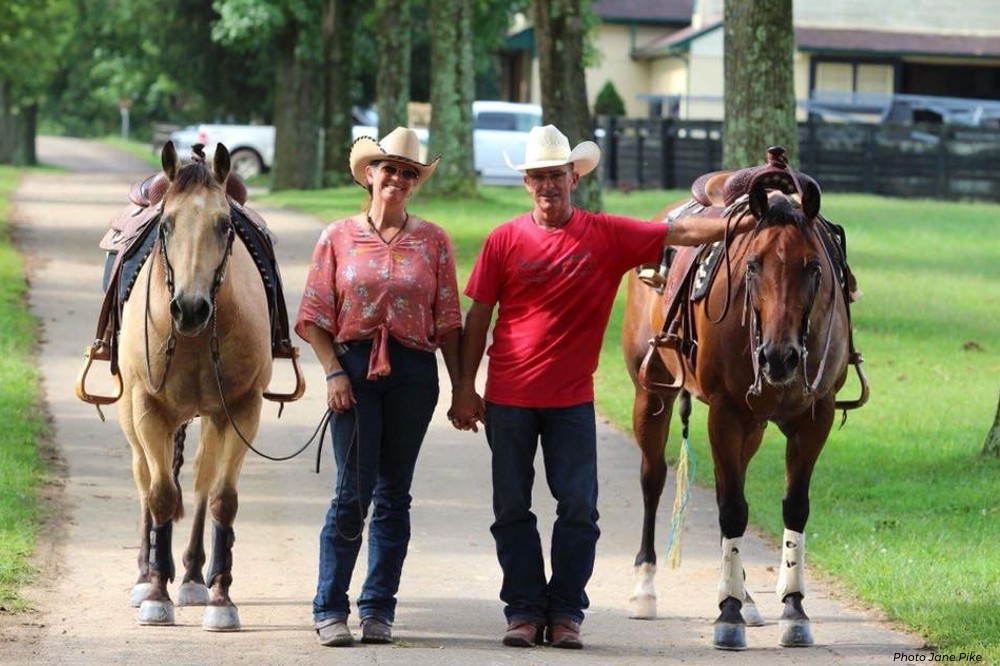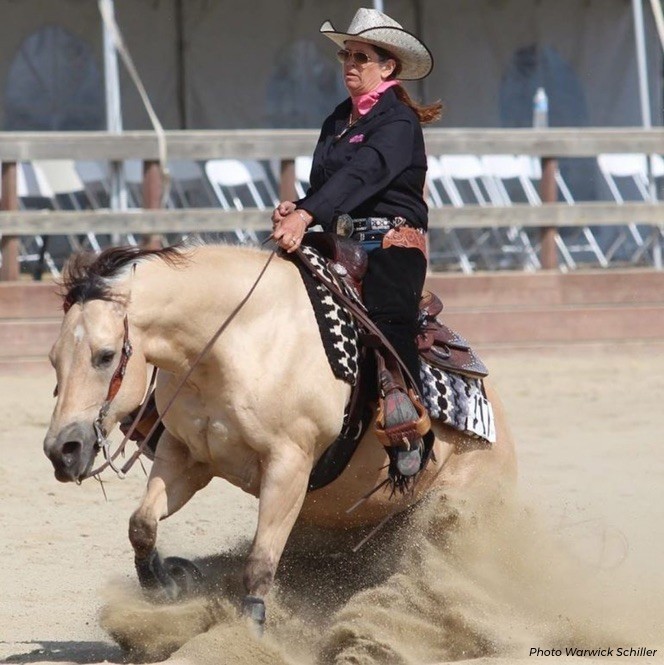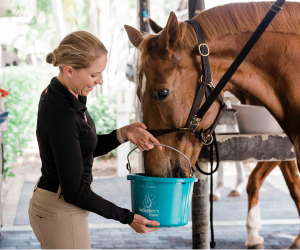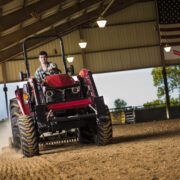What English Riders Can Learn From WEG Reining Contender Robyn Schiller

Robyn Schiller describes the signature move of a reining pattern — riding at a full gallop and into a sliding stop — as an act of mindfulness.
The FEI defines reining, one of the eight FEI disciplines featured at the World Equestrian Games, as “a judged event designed to show the athletic ability of a ranch-type horse in the confines a show arena”. It involves riding patterns of slow circles, fast circles, flying lead changes, rollbacks over the hocks and a series of impressive, 360-degree spins done in place. It’s a hoot to witness: Short, stocky Quarter Horse types gallop at full speeds from one end of the arena to another. And with the gentlest of aids from their quiet, stoic riders, these beefy horses rock back onto their hind ends, and slide deep into the dirt as they come to an abrupt, but breathtaking halt.
“The last thing you want to be is in a rush,”describes Robyn, a reining champion hailing from California. “If you tense up before the stop, your horse will feel it, and the halt won’t be as good. Everything is about how you reinforce the aids in that moment, to get the best response from your horse. You just can’t overthink it.”
The principles of training are all the same, but the aids may be a little different [than in English disciplines].
From the big and heavy, fringe-adorned Western saddles to the sparkly buckles on the bridles and colorful sequins on rider attire, reining couldn’t seem farther away from the traditional and classic look of the Olympic English riding disciplines. But Robyn says there are more similarities than meets the eye.
Read This Next: Natural Horsemanship Isn’t A Dirty Word
“The principles of training are all the same, but the aids may be a little different,” says Robyn, who is competing in reining with her husband, the legendary horseman Warwick Schiller, for Australia at the World Equestrian Games in Tryon, N.C., this year. “Shoulder-in is my husband’s go-to maneuver. He’s ridden some true dressage horses and will always be the first to tell you, ‘this is what reiners should feel like.’ We use elements of dressage all the time actually, to get the horse to carry themselves.”

But unlike in dressage, where riders generally carry a feel of the horse’s mouth for contact, the goal in reining to show how well the horse responds to the aids while on a loose rein, she says.
“This is a really hard thing to fake,” Robyn says. “Your horse will only show as well as you can ride. It keeps you humble. You can’t just got out and buy a nice horse and think you can win.”
The biggest difference Robyn sees between Western and English disciplines is the focus on horsemanship. She says like under saddle training, the techniques are different, and that at least in her barn, they spend much more time getting to know a horse from the ground. The goal, of course, is to build trust and to come to understand the animal.
Most of the time we spend with them is on the ground, doing what you would do when you were 12 years old
“To understand the nature of the horse, to get a good idea of how they think and how they feel, that comes first,” Robyn describes. “We want horses that love their jobs. That’s the most important thing to us. We’ve let nice horses go that didn’t.”
Robyn says she’s noticed a shift in the last couple of years that’s really tuned in to how riders are asking their horses and listening more to how the horse responds.
“When you find your horse’s voice, it’s really interesting to hear the things he has to say to you,” she explains. “Some trainers may not have the luxury of time to do it the way we do. Most of the time we spend with them is on the ground, doing what you would do when you were 12 years old, just spending time with them.”
Like this article? Try: Respect the Horse
That ground work then carries over to under saddle, she says.
Robyn was riding horses before she could walk, thanks to her equestrian mother. As a junior, she showed in 4-H in California. While she dabbled a little in English classes, Western was clearly where her heart lied.
“But I never looked at reining until I met Warwick,” she says.
It was a horse the couple received as a wedding gift and that her husband trained, that she first showed in reining. Now she’s headed to WEG to compete on the Australian team alongside her husband aboard her buckskin gelding, Smart Like Steady.
“In 2010 Warwick showed in the World Equestrian Games in Kentucky, and we thought that was a once-in-a-lifetime experience,” Robyn says. Robyn was the alternate on the team that year, and did not get to show. (The rules changed in 2014, and now alternate riders get to show). “It’s such an experience to be part of it. We’re thrilled to be here again.”
Sign up for the Heels Down Brief to hear more from Robyn. This week, she’ll share her favorite grooming secrets and tips for the warm up exclusively in the Brief.
[et_bloom_inline optin_id=”optin_4″]


